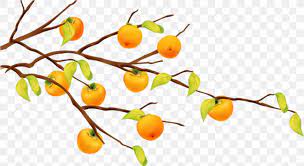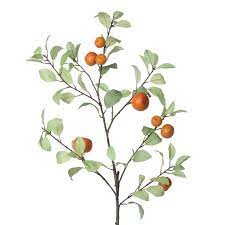Tangerine and mandarin are both citrus fruits belonging to the same family (Rutaceae) and are often confused due to their similarities in appearance and taste. They are both small, round fruits with a thin, easy-to-peel skin and are known for their sweet and tangy flavor. However, they do have some distinct characteristics that set them apart.
Tangerines are typically larger than mandarins. They can range from small to medium-sized, and their size can vary based on the specific variety. The skin of a tangerine is usually thicker and tougher compared to a mandarin. It’s often a bit harder to peel, but still relatively easy compared to other citrus fruits.
Tangerines are known for their vibrant and tangy-sweet flavor. They have a pronounced citrus aroma and are often juicy. Some popular tangerine varieties include Clementine, Dancy, and Honey tangerines.
Tangerines typically have a bright orange color, but shades can vary depending on the specific variety and ripeness. Mandarins are generally smaller than tangerines. They are often more petite and compact in comparison. The skin of a mandarin is thinner and looser than that of a tangerine. It’s very easy to peel and usually separates from the segments without much effort.
Mandarins have a sweeter and milder flavor compared to tangerines. They are less tangy and often have a subtler citrus aroma.
Mandarin varieties include Satsuma, Kinnow, and Owari. Satsumas, for example, are a type of mandarin with a loose, easily removable skin and a sweet taste. Mandarins also come in shades of orange, but their color might be slightly more muted or pale compared to tangerines.
The Economic Importance and Uses of Tangerine and Mandarin Branches

Tangerine and mandarin branches have several economic importance and uses across various sectors.
Here are some of them:
1. Fruit Production and Sales: Tangerines and mandarins are popular citrus fruits known for their sweet and tangy flavor. The branches of these trees are essential for fruit production. Healthy and well-maintained branches result in higher fruit yields, contributing to the overall profitability of citrus orchards.
2. Food Industry: Tangerines and mandarins are widely used in the food industry to make juices, jams, marmalades, and other processed products. The branches can be a source of raw material for extracting essential oils used in flavoring various food products.
3. Export and Trade: Tangerines and mandarins are often exported to different countries, contributing significantly to international trade. Properly pruned and maintained branches can lead to high-quality fruit production that meets export standards, enhancing the economic value of these fruits in global markets.
4. Landscaping and Ornamental Plant Trade: Tangerine and mandarin trees are also valued for their ornamental qualities. Landscapers use these trees in gardens, parks, and public spaces due to their attractive appearance and fragrant blossoms. Branches can be pruned and shaped to enhance the aesthetic appeal of these trees in various landscaping projects.
5. Essential Oil Production: The essential oil extracted from tangerine and mandarin branches has applications in the fragrance and cosmetics industries. These oils are used in perfumes, aromatherapy products, lotions, and other beauty and personal care items.
6. Medicinal Uses: Certain compounds found in tangerines and mandarins, such as flavonoids and antioxidants, have potential health benefits. Extracts from the branches and leaves might be utilized in traditional medicine or as a source of natural compounds for pharmaceutical research.
7. Livestock Feed: In some cases, the leaves and branches of citrus trees, including tangerines and mandarins, can be used as livestock feed. This can provide a supplementary food source, especially in regions where these trees are abundant.
Read Also: Tangerine and Mandarin Stigma: Economic Importance, Uses and By-Products
8. Cultural and Traditional Uses: In some cultures, tangerines and mandarins hold cultural significance and are used in festivals, rituals, and traditional practices. The branches might be used as decorations during special occasions or ceremonies.
9. Wood and Craftsmanship: While not a primary use, the wood from tangerine and mandarin trees can be utilized for small-scale woodworking or craft projects. However, the wood is not as commonly used as that of other tree species.
10. Educational and Research Purposes: Tangerine and mandarin branches are also used for educational purposes in schools, research institutions, and botanical gardens. They can serve as specimens for studying plant biology, horticulture, and agricultural practices.
11. Eco-tourism and Agri-tourism: Citrus orchards, including tangerine and mandarin groves, can attract tourists interested in experiencing agricultural practices and enjoying the beauty of the orchards. Branches laden with ripe fruit create a picturesque environment that can be leveraged for tourism.
The Products and By-products That Can Be Derived From Tangerine and Mandarin Branches

Tangerine and mandarin branches can be a source of various products and by-products due to their botanical characteristics and chemical composition.
Here are some of the potential products and by-products that can be derived from these branches:
1. Fruits (Primary Product): The primary product from tangerine and mandarin branches is, of course, the fruits themselves. Tangerines and mandarins are citrus fruits known for their sweet and tangy flavor. They are commonly consumed fresh, juiced, or used in various culinary applications.
2. Essential Oil (Primary Product): The essential oil extracted from tangerine and mandarin peels is a valuable product used in aromatherapy, perfumery, and flavoring. Tangerine and mandarin essential oils have a refreshing and uplifting scent. They are often used to reduce stress and anxiety.
3. Citrus Peel Extracts (Primary Product): The peels of tangerines and mandarins contain bioactive compounds such as flavonoids and polyphenols. These peels can be utilized to produce extracts for dietary supplements, natural food coloring, and functional additives in various products.
4. Candied Peels (Primary Product): Tangerine and mandarin peels can be candied to create a sweet and chewy treat. Candied peels are used in baking, confectionery, and as toppings for desserts.
5. Animal Feed (By-Product): Branches and leaves not suitable for human consumption can be used as feed for animals, particularly herbivores. They provide fiber and some nutrients to livestock.
Read Also: List of Diseases Ruminant Animals (Livestock) Get from Feeds and Water
6. Mulch and Compost (By-Product): Pruned branches and leaves can be chipped or shredded to create organic mulch or compost. This helps improve soil structure, retain moisture, and provide nutrients to plants.
7. Biofuel (By-Product): Branches and woody parts can be converted into biomass for biofuel production through processes like pyrolysis or gasification. This can contribute to renewable energy generation.
8. Medicinal Extracts (By-Product): Some compounds present in tangerine and mandarin branches might have potential medicinal properties. Extracts could be researched and developed for their antioxidant, anti-inflammatory, or other health benefits.
9. Agricultural Chemicals (By-Product): Compounds from citrus branches, such as natural pesticides and insect repellents, can be extracted and used in agriculture for pest control in a more environmentally friendly manner.
10. Crafts and Art Supplies (By-Product): Thin branches and twigs can be used in crafting and DIY projects. They can be turned into wreaths, decorative items, or even used in basket weaving.
11. Natural Dyes (By-Product): The pigments present in the branches and leaves can potentially be used as natural dyes for textiles and crafts.
12. Plant-Based Ingredients (By-Product): The leaves and branches could be explored for potential use as plant-based ingredients in various formulations, such as cosmetics and skincare products.
13. Educational and Scientific Uses (By-Product): Tangerine and mandarin branches can be utilized in educational settings, such as in biology classrooms or botanical gardens, to demonstrate plant structure and growth.
In conclusion, tangerine and mandarin branches contribute to various economic sectors, including agriculture, food production, trade, and more. Their uses range from fruit production and export to essential oil extraction, ornamental landscaping, and even cultural practices. These branches play a crucial role in supporting livelihoods and industries across the globe.





